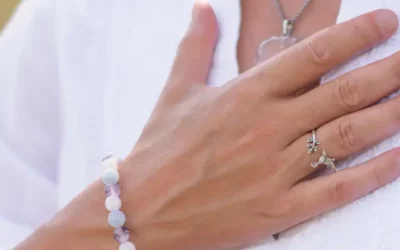Ever heard of The Boiling Frog Syndrome? When you put a frog into boiling water, it will jump out. If, however, you put a frog in tepid water and begin to heat it, the frog will get slowly cooked to death without even realizing it. That’s exactly how abuse functions. In this article, I hope to tell you how coaching teenagers can prevent them from being abused so that they don’t have to suffer the same fate as the frog.
Abusers are not stupid to spring up on their victims and attack them. They’re not always the disgusting looking burly men with bloodshot eyes that we see on the television. In fact, they’re often quite charming and charismatic. Abusers can be people in your social circle, workplace, somebody you are romantically involved with, or even a family member.
Abusers use sure but subtle means and start with non-obvious forms of emotional or psychological abuse. In fact, the National Association of Adult Survivors of Child Abuse notes that emotional abuse can be so subtle that victims often don’t even realize they’re being abused. The transition from affection to control to violence can be slow and inconspicuous.
Abusers are people whose insecurities run extremely deep. In order to feel powerful and important, they feed off of other people’s self-esteem. They do this by striking on the victim’s insecurities. Coaching teenagers can build their self-assurance and so prevent them from falling prey to such abuse in the future.
I’d like to point out here that nobody ever really expects to be abused. Remember that everybody has insecurities, even super talented above average people. This can happen to anybody. In fact, according to the 2010 National Intimate Partner and Sexual Violence Survey, one in three women and one in four men experience abuse in their lifetime. Building self-esteem by coaching teenagers can serve as a powerful preventive measure.
In order to further explain my point, I have divided the rest of this article into 2 parts:
- How abuse works – to explain how any individual can fall prey to abuse.
- How coaching teenagers can prevent their abuse – so that you are informed of ways to ensure that your children grow into assertive and confident young individuals. Individuals who are fully capable of coping with the realities of the world.
How Abuse Works
Let the vase in the image represent the individual’s self-esteem before the abuser comes into the picture. The cracks on the vase represent the individual’s insecurities. Here’s an example:
Personal traits that the individual values in themself:
- I’m intelligent
- I sing well
- I’m pretty
- I’m friendly and approachable
- I’m kind and caring
Possible insecurities that the same individual might have:
- Other people have more exposure than I do. I don’t know as much as them.
- I don’t pick up harmonies as fast as other singers do.
- I have fat arms. They make me look funny.
- I don’t feel like I fit in anywhere.
- I get irritated with others and sometimes upset the ones I love.
3. The abuse can get so bad that it can completely shatter the victim’s self-esteem. This can result in health problems, emotional meltdowns, and anxiety attacks. The victim now feels so poorly of themself that they are convinced that they actually need the abuser and is incapable of functioning without the abuser. Everything the abuser tells them is now accepted as the truth.
2. Enter abuser. It starts with closely observing the victim’s behaviors and reactions. Then, like a nail being constantly hit on the cracks of the vase with a hammer, the abuser begins to persistently strike on the victim’s insecurities. Unobvious tactics such as using nicknames that are “cute” but derogatory, giving unsolicited “advice”, and constant passing of remarks are used in the beginning. If the victim senses it, the abuser might gaslight, show anger, pretend to be remorseful, and even blame the victim for their emotional outbursts.
The victim thus feels responsible for “hurting” and “upsetting” the abuser. The victim doesn’t even realize that all of this is further deepening their insecurities. Their self-worth has now considerably reduced and the victim unconsciously starts to believe that they deserve this treatment.The abuser now has complete control over the victim. Often at this stage, the abuser progresses to physical and / or sexual (in case of romantic relationships) abuse. Walking away is often not even an option in the mind of the victim given their absolute lack of self-worth.
Healing from the trauma cannot begin until the abuse is stopped. Healing takes time and the long term effects of the abuse are many. In many unobvious but serious ways, it can impact the victim’s personal & social relationships, performance at work, physical and mental health, etc. Victims must go through rigorous therapy and constant reprogramming of the mind with positive affirmations.
How can coaching teenagers prevent their abuse?
The answer is simple. Why wait till a cure is needed when abuse can be prevented by coaching teenagers?
- Individuals are only just getting a sense of self during their teenage. This is quite literally a ‘make it or break it’ period in their lives. Investing in their self-esteem during this period can help them grow into self-assured individuals. It will therefore severely reduce their chances of falling prey to the tactics of abusers.
- Since coaching helps the client work towards the ‘ideal self’ they wish to become in the future, it serves as a powerful tool in helping teenagers become aware of their values and beliefs. As they work towards their ideal future selves through coaching conversations, they will stumble upon their own limiting beliefs. This will give them a chance to explore these limiting beliefs and insecurities in a safe environment and work on them early on in life.
- Coaching uses an ‘asking’ approach. This is an extremely empowering tool as it reassures the client that they have all the answers, not the coach. The client, therefore, has the opportunity to find solutions for themself. The coach is only helping with reflection. A coach never tells the client what to do. The client now feels confident in their ability to take care of themself. What better way to create a sense of healthy independence in your teenage child?
Remember that you can only protect your children as far as you can control. Instead, if they are equipped with the necessary life skills, they can take care of themselves. Coaching teenagers thus enables them to confidently focus on their personal and professional growth in an independent manner rather than living in fear and merely surviving.
Going back to the boiling frog reference I started out with, perhaps if the frog was warned beforehand, it would never have entered the water in the first place!* The illustrations used in this article have been made by me. You can see more of my work around the topic of self care on my Instagram page, Damsel in a Doodle
Watch our webinar on coaching children, teenagers and young people



